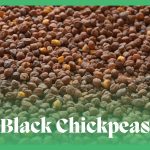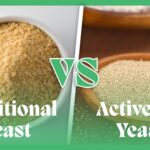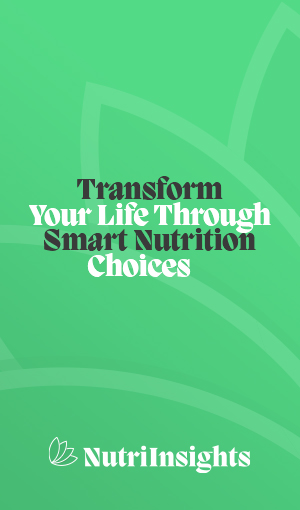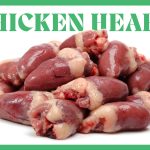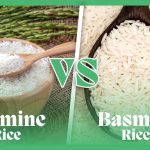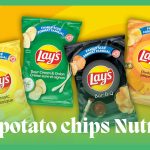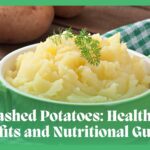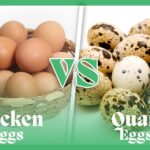Among the list of comfort foods during colder months that generate feelings of coziness, nostalgia, and satisfaction, Mac and Cheese provides a creamy, warm, and hearty meal. The iconic blue box in everybody’s kitchen pantry, Kraft’s Mac and Cheese is unrivaled.
But what nutritional mysteries lie in each macaroni twist and its cheese powder? Let’s find out!
What is Kraft Heinz?
Kraft Heinz is an American multinational company formed in 2015 by the merger of Kraft Foods and H.J. Heinz company with headquarters in Pittsburgh and Chicago. It is the fifth-largest food and beverage company in the world and third-largest in North America, with 26 billion dollars in net sales as of 2022. The company is home to 37000 employees globally and has products produced and marketed in over 40 countries.
The company includes brands like Kraft, Oscar Mayer, Ore-lda, Classico, Velveeta, smart Ones, Capri Sun, Kool-Aid, Jell-O, Maxwell House, Lunchables, Heinz, Quero, and others and claims to provide high-quality, nutritious, and tasty foods one can enjoy anywhere.

Kraft Mac and Cheese:
Kraft mac and cheese is a convenient box dinner laced with nostalgia enjoyed by children and adults, equally. This classic 8-ounce blue box of mac n cheese contains macaroni pasta and cheese powder mac and cheese and prepares 3 servings in a box. To prepare it, all you need is milk and butter.
Boil the pasta until soft, and drain the water. Put butter, milk, and cheese in a separate pan, add the boiled pasta, and mix and enjoy the cheesy goodness of this mac and cheese on a cold chilly day.

Nutritional composition:
One box of Kraft’s Mac and cheese contains 68 grams and provides 220 kilocalories. The 30 grams of carbohydrates contain only 1.02 grams of fiber. They are a considerable source of proteins (7 g) with high saturated fatty acids (2.50 g).
The prominent micronutrients present in Mac and cheese are Calcium, iron, and Sodium.
| Nutrients (1 packet=68 g) | Amounts |
|---|---|
| Macronutrients | |
| Calories | 220 kcal |
| Carbohydrates | 30 g |
| Fiber | 1.02 g |
| Sugar | 3 g |
| Protein | 7 g |
| Total fats Saturated fatty acids | 6.99 g 2.50 g |
| Micronutrients | |
| Minerals Calcium Iron Sodium | 99.96 mg 1.80 mg 690.20 mg |
Are Kraft mac and cheese healthy?
The blue packaged widely famous Kraft mac and cheese that we have consumed both as a child and as an adult is not only filling but also delicious. But is it healthy? Is it filled with healthy and essential nutrients your body requires? Let us dig into it and find out if it has any place in our healthy diet choices.
It is high in sodium:
Sodium is one of the body’s electrolytes, essential for normal body processes. Some of its functions are keeping fluid balance, nerve and muscle control, and blood pressure homeostasis. However, overconsumption of sodium is linked with high blood pressure and stomach cancer.
The recommended daily amount of sodium is 1500 mg-2300 mg, while a box of mac and cheese, a single-time meal, contains 690 mg of sodium. The average consumption of sodium in an American diet is 3400 mg per day in highly processed foods.
A study revealed that consuming less salt than required reduces the likelihood of high blood pressure in hypertensive patients (1). Increased blood pressure leads to cardiovascular disorders, stroke, kidney problems, metabolic syndrome, and dementia. Another study concluded that sodium consumption in the United States has increased by 6% in the past years and has reached up to 4000 mg per day, twice the recommended amount.
About 77% of that salt consumption mainly comes from processed and restaurant foods. It has been estimated that reducing salt consumption may save 150,000 lives over 20 years (2).
It is high in fats:
Kraft mac and cheese are particularly high in saturated fats. The concept of saturated fat consumption is evolving, as new guidelines suggest that the previous recommendation to limit saturated fatty acid consumption to less than 10% does not lead to cardiovascular complications (3).
However, the regular consumption of saturated fatty acids from ultra-processed foods may increase your risk of cardiovascular diseases, hypertension, obesity, and cancers (4). The American Heart Association still recommends a saturated fatty acid intake to not surpass 5-6% a day.
It is high in toxins:
Kratf mac and cheese has a high content of phthalates toxins even though it’s not on the ingredient list. Phthalates have been found in almost every cheese powder sample used to prepare mac and cheese.
Phthalates are industrial chemicals used in soaps, plastics, rubbers, inks, adhesives, and fragrances. They enhance the durability and flexibility of the plastics they are added in.
These toxins affect men, women, and children equally. In men, phthalates cause testicular atrophy, prostate gland shrinkage, and low sperm count that leads to infertility. In females, pregnant women are more susceptible to its toxicity as consuming phthalates-containing foods may increase the risk of babies born with genetic defects.
In 2008, phthalates were banned in children’s products as studies associated them with behavioral issues, autism spectrum disorder, diabetes, low IQ, and neurodevelopment issues. Apart from infertility problems of phthalates, they also cause allergies, obesity, asthma, and breast cancer (5).
It is high in empty carbohydrates:
Being high in carbohydrates is not the issue, but being high in empty carbohydrates and low in fiber is a matter of concern. The macaronis are made of refined wheat with bran and germ removed which makes them high in empty carbohydrates and low in fiber. Refined wheat consumption leads to type 2 diabetes, metabolic syndrome, and obesity.
Refined carbohydrates break down into glucose rapidly, thereby building a sudden spike in the blood sugar level, which may not be suitable for pre-diabetic and diabetic people and those who wish to lose weight.
Moreover, kraft mac and cheese is high in gluten, so it is not suitable for people with gluten sensitivity issues.
EWG’s food score:
Environmental working group (EWG) is a comprehensive tool that rates foods based on three factors: nutrition, which includes the nutrients present in the food; ingredients, such as food additives and contaminants; and processing, indicating the degree to which the food has been processed. The food scores aim to guide people to choose green, healthy, and clean foods.
The EWG food score for Kraft’s Mac and cheese from 0 to 10 is 6.0, with 0 being the worst score and 10 being the best.
According to EWG, kraft mac and cheese is not organically certified and contains additives of moderate amounts, while the ingredients are likely to be derived from antibiotic-treated animals. The product also incorporates moderate protein, low fiber, and 37% of the recommended daily sodium intake.
It also contains ingredients derived from wheat, milk, eggs, and soybean that may cause allergies according to the FDA. So people with dairy allergies, gluten insensitivity, celiac disease, and lactose intolerance are advised to avoid it.
Easy tips to make Kraft mac and cheese healthy:
Let’s discuss some of the tips that you can use to add some nutrients and nutrition to your box of mac and cheese if you wish to consume it every once in a while:
Sneak in your favorite proteins:
While Kraft Mac and cheese has a considerable amount of proteins, however, adding extra protein is a great way. Crack two eggs in a bowl; add the cheese powder with some milk, and mix. Pour it over your macaroni for enhanced taste and nutrition.
Adding chicken and some beef pieces is also a way to incorporate deliciousness and nutrition into your food. Stir fry or grill some chicken and beef pieces and add your favorite spices over it. Add the cooked pieces to the mac and cheese and mix.
Add colorful vegetables:
To get rid of the monochromatic effects of mac and cheese and add healthy vitamins and minerals, toss your favorite veggies in it. Steamed or sautéed Broccoli, peas, Brussels sprouts, capsicum, carrots, potatoes, tomatoes, mushrooms, and cauliflower are some veggies you can add for extra health. Incorporating vegetables into your meals may help prevent chronic diseases such as cardiovascular, cancer, and respiratory diseases.
Choose cow milk substitutes:
The cheesy portion of the Mac and cheese asks for the addition of milk, but what if you cannot consume regular milk? Worry not! There are plenty of milk options you can add to your mac and cheese recipe. You can substitute milk with non-dairy options like almond, oat, or cashew milk.
Replace the cheese powder with your favorite cheese:
If you are a fan of cheese, you can prepare your Mac and cheese extra cheesy by mixing your favorite kind of cheese with the cheese powder that comes in the box.
If you are worried about the toxins in the boxed cheese powder, replacing your preferred cheese with the powder is an option to consider.
Replace butter with olive oil:
Boxed mac and cheese is already high in sodium; cooking it in butter might increase its sodium content. Substituting the butter with olive oil is a great and healthy option. However, if you still wish to use butter, try cooking it with the unsalted one
These tips won’t necessarily make your Mac and cheese a healthy meal but will increase its nutrient content.
In the end, the blue box of classic Kraft’s Mac and cheese might have a nostalgic kick, but there is no health kick to it. So consuming it once a week or every two weeks is a considerable option, but opting for it frequently may open the doors to a plethora of diseases.
References:
- https://doi.org/10.1056/NEJM200101043440101
- Jacobson MF. Salt: the forgotten killer. Washington, D.C.: Center for Science in the Public Interest; 2005
- https://doi.org/10.1016/j.jacc.2020.05.077
- https://doi.org/10.1017/jns.2021.30
- No More Macaroni and Cheese. By Ray Schilling


